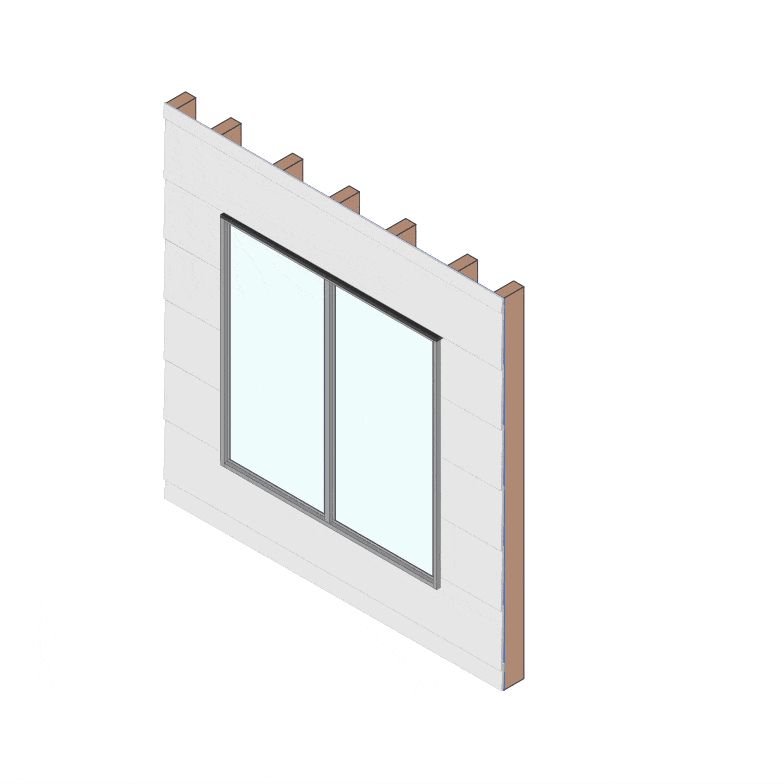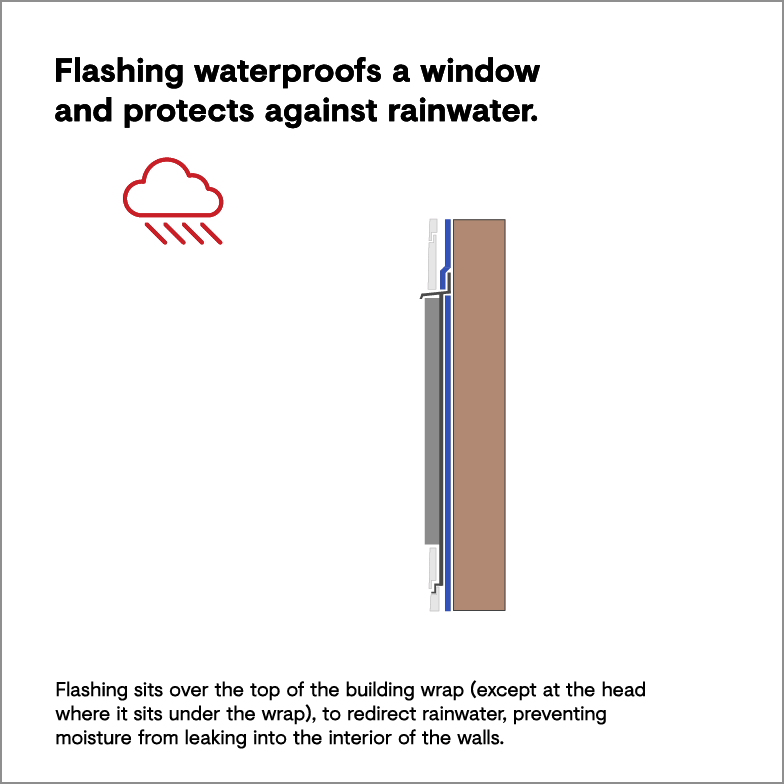
Gallery
A GUIDE TO COMPLIANT WINDOWS
First thing’s first: wherever a home is located—anywhere around Australia—it’s now a direct regulatory requirement that the windows feature some kind of flashing.
There are plenty of positives to window flashing.
Regardless of the type or material you choose, window flashing is inexpensive, easy to install, and can save you substantial amounts of money by protecting against the costly impacts of water damage or penalties for non-compliance.
However, for many builders, flashing is misunderstood. There’s confusion around when it’s required, why you might install it, and what can happen if you don’t.
In this easy-to-follow guide, you’ll learn:
Did you know: The Victorian Building Authority and private inspectors are spending more time and energy looking for instances of non-compliance due to missing window flashing. This is due to widespread confusion around the requirement for flashing and high levels of known non-compliance.
Although there are many different types of flashing, they all achieve the same purpose. Flashing is designed to waterproof a window and protect against rainwater damaging the internal building fabrics of your home.
In most cases across the east coast of Australia, homes consist of a timber frame with cladding on the outside—whether brick veneer, weatherboard, or other materials—with a waterproof building wrap between the timber and the cladding.

Flashing works with the building wrap to redirect rainwater, preventing moisture from leaking into the interior of the walls.

With that in mind, flashing is important for two key reasons:
There are three main types of window flashing:
Did you know: At A&L, we offer a wide range of flashing options that can be tailored to your unique requirement, and conveniently supplied as part of your window order. It’s the easy way to take the hassle out of window flashing and protect yourself against the pitfalls of non-compliance!
Please note, door sill flashing is also a key requirement. Although flashing to the sills of all door products has been required since the introduction of the NCC 2019, the proposed amendments for 2022 include more detailed notes and section drawings showing the typical install of an Alcor-type semi-rigid flashing material in this position.
Wherever you are in Australia, every window in a home with masonry veneer or lightweight construction cladding requires some type of flashing. This is a clear and definitive requirement for compliance with the newly updated National Construction Code, as of February 1st, 2019.
Here’s where some of the confusion comes in.
While flashing was mentioned in the Code previously, it was often using non-definite terms: phrases like “flashing is necessary where required”. Now, the Code offers the following prescriptive guidelines*:
As outlined by the Code in Clause 3.3.5.8, flashings must be applied to the top and bottom (or head and sill) of an opening. Additionally:
Clause 3.5.4.6 of the newly updated Code stipulates that flashing must be provided to the top, sides and bottom (head, jambs and sill) of an opening. Additionally:
Further, joins in the flashing must:
There are two likely outcomes for failing to flash a window. Neither is positive; both will cost you time and/or money.
With water leaking into building materials over time, you can experience warped or cracking plaster in your walls, swollen timber or floorboards, or mould. Depending on the extent of the damage, it’s likely going to be costly and time intensive to repair.
For builders, this likely means lost time and money. For homeowners, it’s enormously inconvenient. Why?
As a builder, imagine you’ve just finished building 10 lightweight or weatherboard homes. The windows are plastered in and the occupants are ready to move into each property.
Before moving in, one of the occupants contacts an independent building inspector to check the house. The inspector’s services likely cost a few thousand dollars, so they are keenly motivated to complete their due diligence and provide a thorough report.
Walking through the home, the inspector recognises quickly that there is no flashing on the windows. Unlike non-compliance with energy-ratings—which requires several tests and detailed information to identify—a lack of flashing is clearly and immediately visible for a building inspector. Further, it is well known that there are large levels of non-compliance for window flashing across the building industry at present, particularly since the NCC’s updates last year.
As a result of the non-compliance, the certificate of occupancy is delayed until all windows are flashed.
Unfortunately, that means ripping off all the cladding and plaster work, installing flashing, re-plastering, repainting the plaster, and reapplying the cladding. For every single window in every home you’ve built.
You likely have to halt progress on other build sites while the flashing is retrospectively installed, throwing out delivery timeframes, and the homeowners can’t move in until the situation is rectified. It’s generally inconvenient and costly across the board.
It’s simple: order your window products with flashing included and ensure the flashing is installed correctly.
If you have the right materials on site, affixing flashing to a window takes literally seconds. And it can save you from lost time and money—and the severe inconvenience of re-doing work—caused by non-compliance.
With building authorities like the VBA conducting proactive inspections and shining a spotlight on window flashing, the likelihood of being identified for non-compliance is growing.
While the revised National Construction Code provides clear guidelines for window flashing, we can support you to understand your responsibilities, provide flexible options to suit your design requirements, and make the process as simple and convenient as possible.
For more insight into different flashing options, get in touch with the team today!
*This article has been developed to provide general guidance, awareness and education. It should not be viewed as a definitive guide and should be read in conjunction with the requirements of the National Construction Code (www.abcb.gov.au). While every effort has been made to ensure the information is accurate, A&L expressly disclaims all and any liability to any person for anything done in reliance on this publication. No responsibility is accepted by A&L for any mistakes, errors, or omissions in this content.